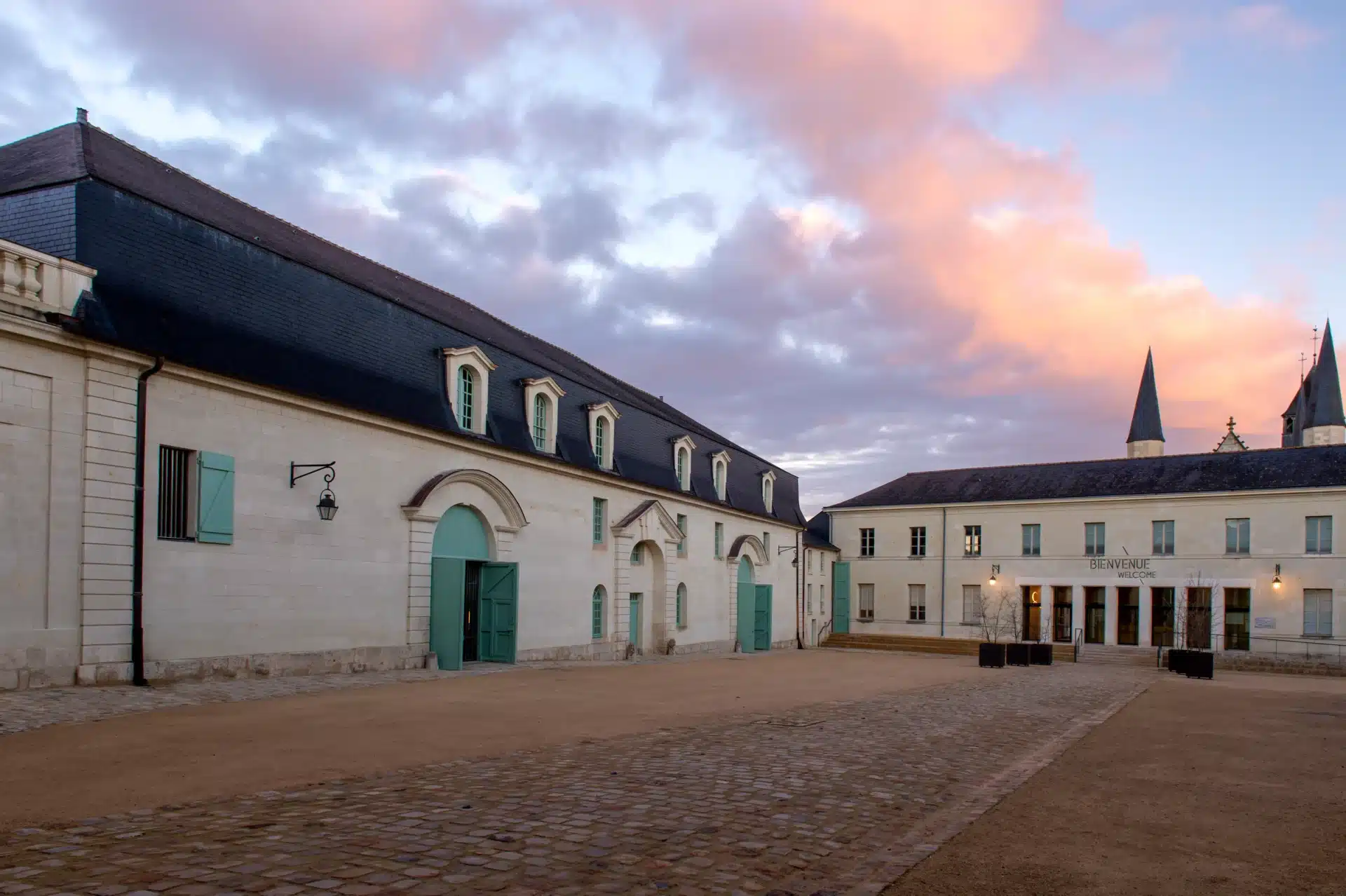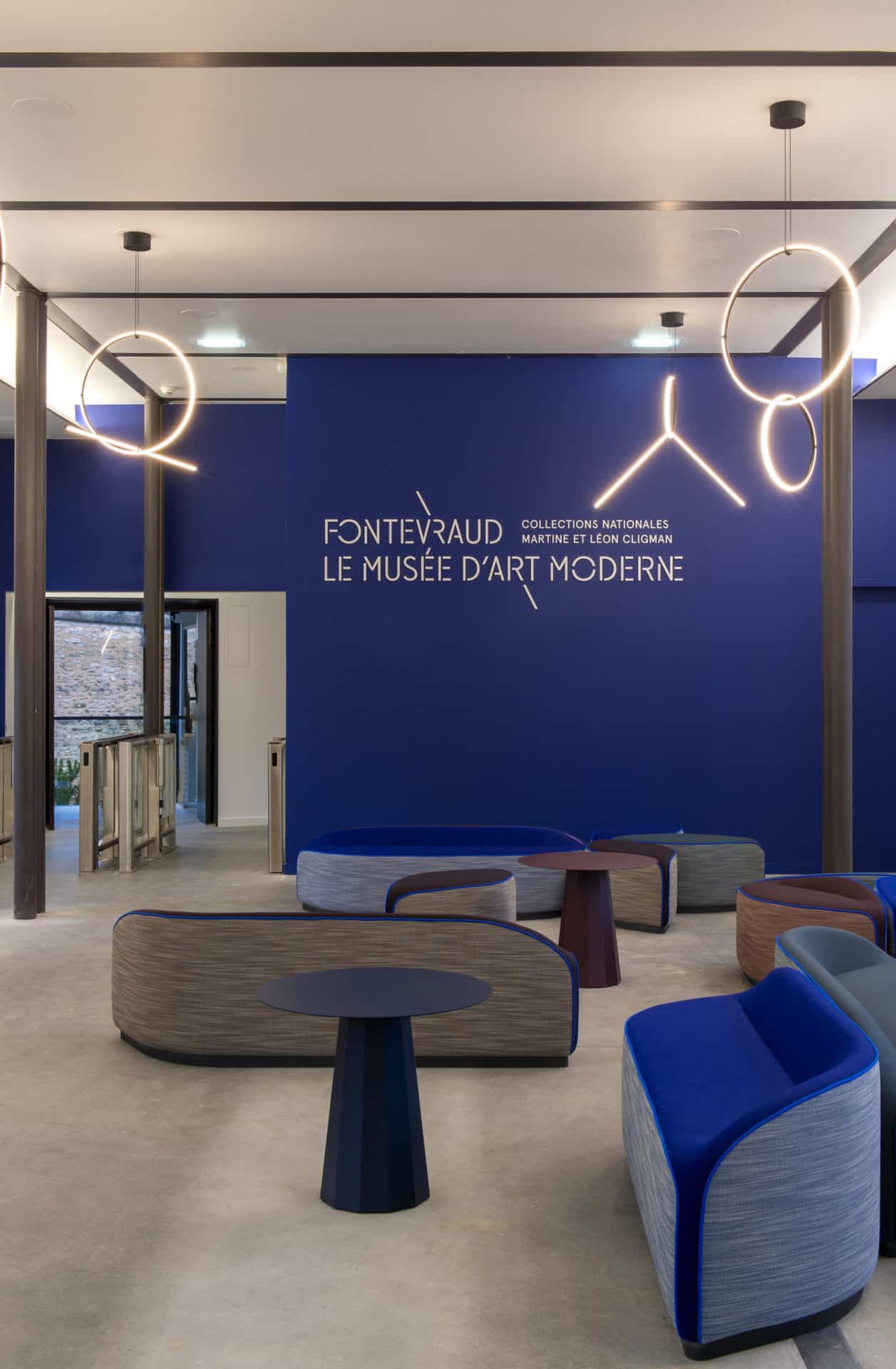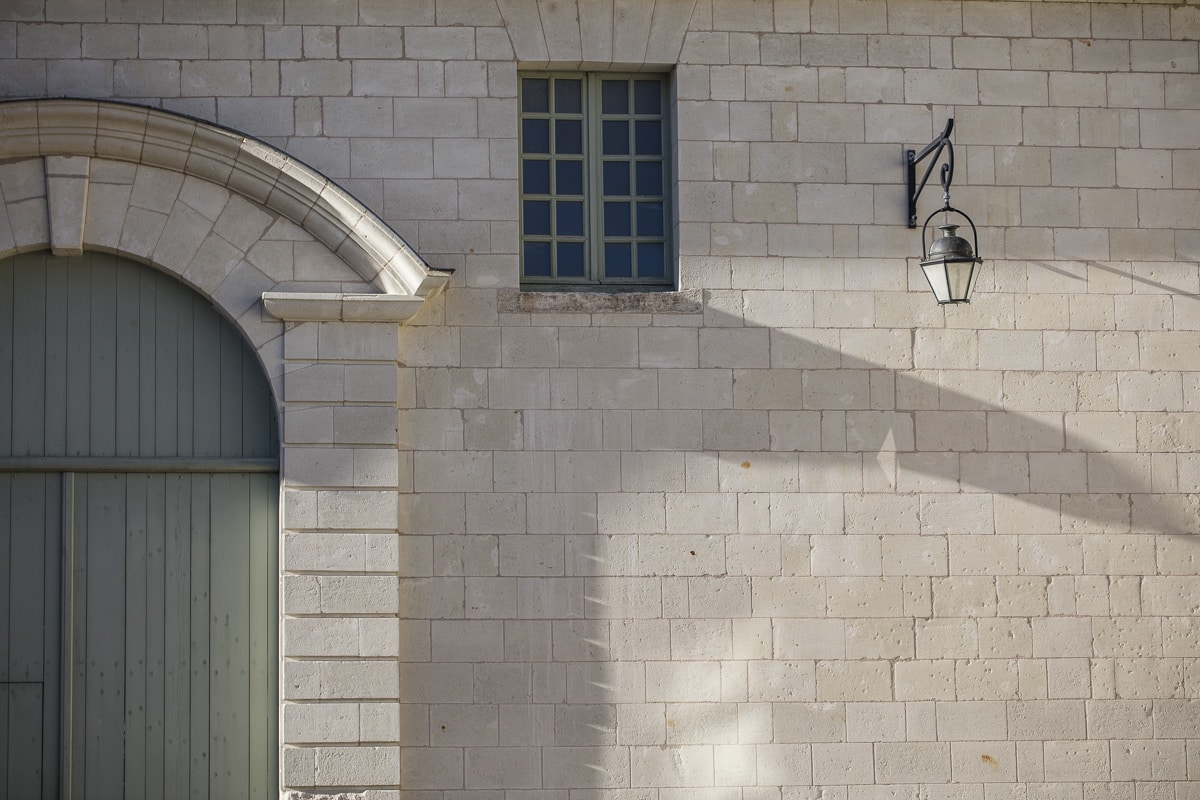History
History of the Fontevraud Museum of Modern Art
Published on 13 November 2024

Thanks to the exceptional donation from Martine and Léon Cligman, the Fontevraud Museum of Modern Art opened its doors on May 19, 2021.
The museum and its collection
Open since May 2021, the Fontevraud Museum of Modern Art rich and original collection, which can be viewed online, consists of paintings, drawings, sculptures, glassworks and antique objects.
The Fontevraud Museum of Modern Art is identified by the story it wants to tell: capturing the spirit of a collection.
The recreation of an ‘imaginary museum’, a highly personal – and even passionate – mental phenomenon, leads visitors into a world of forms and invites them to understand the perspective that guided the acquisitions.
Drawing on the richness and variety of this collection, the parcours reveals the exciting approach of moving from a private universe to a public space, offering visitors an experience that transcends space and time through the confrontation of objects from different cultures and periods, and finally, through the discovery of artists through the eyes of enlightened amateurs from the second half of the 20th century.
Inaugurated in May 2021, the Fontevraud Museum of Modern Art was awarded with its first star in the 2022 edition of the Michelin Green Guide Châteaux de la Loire, Pays de la Loire, one of the most consulted guide collections by European tourists. It earned a second star in the same guide in 2024.
From the eye of the collector to the gaze of the curator
As the expression of choices and commitments, a private collection reveals the sensibility of those who built it. A museum, on the other hand, is identified by the story it tells.
So how do we reconcile the history of art and the history of taste, based on an exceptional donation of than 800 works (from Antiquity, Africa, Asia, the Americas and modern Western art)? How do you go from a private collection to a museum intended for the general audience?
The approach is simple: to escape the classifications of art history and offer a reading through the eyes of art lovers in the second half of the 20th century. In a journey that abolishes space and time by confronting objects of different origins and periods, the museum invites the spectator on a sensory voyage. It does not recreate the universe of the collectors, but evokes it in an intimate, contemporary museography. The museum is off the beaten track, with a variety of ways of presenting works: groupings by formal relationships, thematic conversations, and unusual associations. For example, there are dialogues between a Sumerian dignitary and a painting by Maurice Marinot, an Egyptian mummy’s head and a portrait by Kees Van Dongen, a tapestry by Jean Lurçat and sculptures by Germaine Richier.
In this way, the museum suggests a relationship with works that are often unknown to the public, allowing them to claim ownership of these pieces. It encourages them to form a very personal connection with the artwork, an approach that can be adopted by anyone.
Dominique Gagneux, Director and Chief Curator
Martine and Léon Cligman National Collections
On September 1, 2017, thanks to the donation of part of Martine and Léon Cligman personal collection, the Region Pays de la Loire announced the creation of a museum of Modern Art at the heart of the Royal Abbey of Fontevraud, a state-owned site listed as a historic monument.
The donation significantly enhances to the heritage and cultural dimension of Fontevraud, the oldest cultural meeting center, which was labeled in 1976 and supported by the Ministry of Culture. It is a leading cultural hub that radiates across the Pays de la Loire region and far beyond.

Architecture and museography
An architectural and scenographic project
In keeping with the scientific and cultural project devised by Dominique Gagneux, the museum’s director, the architectural project was designed by Christophe Batard, chief architect of historical monuments, with the agency 2BDM, while the scenography was created by Constance Guisset studio.
The architectural design spans 1,700 m², with an additional 170 m² of outdoor courtyard dedicated to exhibitions.
The Fannerie
Built around 1786, the Fannerie is one of the very last buildings constructed during the monastic period. It marks the northern boundary of the entrance courtyard and is strategically placed along the axis of the abbess’s residence, which faces it and was likely intended to complement the composition. Together with the nave of the abbey church of the Grand Moûtier, it is one of the most imposing buildings of the Royal Abbey of Fontevraud.
At the end of the 18th century, it housed the stables for the abbesses of Fontevraud. Quickly repurposed for penitentiary functions starting in the early 19th century, the Fannerie (named after its original purpose of storing hay) was altered, adapted, and mezzanined, all while maintaining its original volume and exterior elegance.

Preparing my visit
Opening times, tours, prices, access… all the information you need to organise your visit.